Safety and Outdoor Ethics
Visiting the national forest is fun and rewarding, but can also turn dangerous if you’re not prepared. This page outlines some tips and recommendations for staying safe while visiting. And before you leave for your visit, make sure to check our Alerts & Notices page for any special area closures or alerts.
Road Conditions
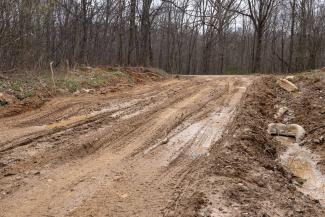
Roads passing through the national forest vary in condition. Some are paved and many others are gravel. Not all are maintained. We recommend sticking to the main roads when possible. If you think your vehicle cannot safely make it down a specific road, turn around. Be aware that some maps and GPS services show roads that no longer exist, and occasionally directions from mapping services try to take you down a non-maintained road or a road that hasn’t actually existed in decades.
Prevent Car Break-Ins
Do not leave valuables in your car. If you must, secure them out of sight. Be aware that catalytic converter thefts are increasing throughout the region. Some cars are more vulnerable for this type of theft, especially trucks and SUVs.
Be Aware of Plants
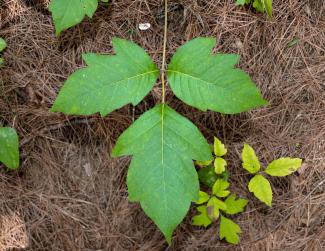
Poison ivy (Toxicodendron radicans) and stinging nettle (Urtica dioica) are both common and should be avoided. Contact with poison ivy can cause itchy rashes and allergic reactions, while contact with stinging nettle can cause temporary, but painful, burning sensations. There is no poison sumac (Toxicodendron vernix) found in the national forest. Contrary to popular belief, there is no poison oak (Toxicodendron pubescens) found in Ohio.
Be Aware of Animals
Any animal is capable of harming you if it feels threatened. Never approach, corner, or touch a wild animal. Always keep your distance from animals, and never provoke them.
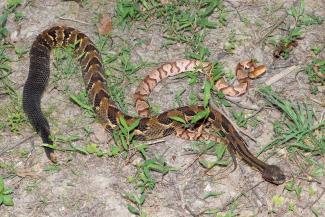
The national forest is home to black bears, copperheads, timber rattlesnakes, northern black widows, and southern black widows, all of which can cause serious harm if provoked. White-tailed deer—especially bucks in rut or does defending fawns—can also cause serious harm if provoked. Always stay 25 yards away from wild animals.
A diagram showing the three main tick species in Ohio.
Ticks are abundant in southeast Ohio, and several species of ticks that can be found. The species that cause humans the most trouble are the deer tick (Ixodes scapularis), American dog tick/wood tick (Dermacentor variabilis), and lone star tick (Amblyomma americanum). Each of these ticks can transmit medically significant diseases and afflictions to humans. Lyme Disease, which can be transmitted by the deer tick, is particularly a concern in southeast Ohio. If you venture into the national forest, it’s important to be prepared for ticks. For more information on ticks, tick bites, tick removal, and tick diseases, visit the Centers for Disease Control’s ticks page.
Stream Water can be Dangerous
Because of the historic mining activity that occurred in southeast Ohio, many streams are polluted with heavy metals and acid mine drainage. We recommend that you never consume water from the Wayne National Forest, even if filtered or treated. While water filtration devices and tablets remove viruses, bacteria, and other concerns, they do not remove heavy metals. Pack in all the water that you will need, or cache the water along the trail you will be using.
Abandoned Mineland Dangers
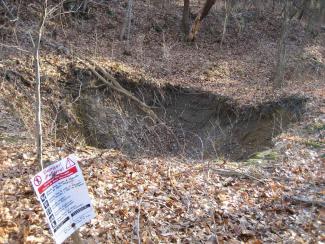
Much of the land that is now the national forest was previously mined, especially in the Athens area. This history has resulted in mine-related hazards across the land today, including in the national forest. Tips for visiting:
- Never enter a mine opening. Not only are they illegal to enter in the national forest, but they’re incredibly dangerous. Toxic gases and the risk of collapse are always imminent.
- Watch where you’re stepping if you’re walking off-trail. Sometimes mine ventilation shafts can be found. Ventilation shafts are holes that lead deep into underground mines Never try to enter a hole in the ground.
- If you come across what appears to be a depression in the ground, do not approach it or walk within the depression. The depression could be a mine subsidence, where part of an underground mine’s roof collapses and creates a sink hole. It is possible that you could fall into the mine.
We regularly work with the State of Ohio to address these dangers when we learn of them. If you find what you think is an abandoned mineland hazard, make note of the area and report it to one of our offices.
Hunting
Hunting is generally allowed anywhere in the national forest with a few key exceptions. Hunting is not allowed in or within 150 yards of a building, campsite, developed recreation site (such as campgrounds, picnic areas, designated swimming areas, etc.), or occupied area (such as parking areas and trailheads). Discharging a firearm is also prohibited from, into, or across any parking area, trail, boat ramp, or road. Everywhere else is public hunting land. We encourage everyone—hunters and non-hunters alike—to stay safe during all hunting seasons.
Outdoor Recreation Ethics
The national forest is a shared resource for the American people. We ask that all visitors practice ethical recreation so that future generations may enjoy this shared public land and its beauty.
Do Not Trespass
The national forest is a patchwork of public land fragmented across 12 counties in southeast Ohio. It is the responsibility of visitors to stay on National Forest System land and not trespass onto privately-owned land. Visit our Topo Map Products database for free, high-quality topographic maps of National Forest System lands to help plan your trip.
Leave No Trace
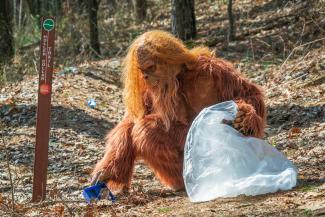
We encourage all visitors to follow the principles of Leave No Trace. Some tips:
- Plan ahead.
- Pack out anything you pack in during your visit.
- Travel on durable surfaces.
- If the trails are muddy, consider visiting at another time.
- Do not cut switchbacks or go off-trail to avoid mud.
- Avoid trampling vegetation.
- Never cut live or standing dead trees.
- Do not vandalize trees, rock faces, or recreation infrastructure.
- Do not stack rocks.
- Do not take any historic artifacts, such as arrowheads or old bottles. These are legally protected.
- Properly dispose of human bio-waste in holes dug at least 200 feet from water, trails, and campsites. The holes should be at least 6 inches deep and 4 inches wide, and should be properly covered after use.
Campfires
Small, open campfires are permitted in the national forest except during extremely high fire danger. While campfires are a time-honored camping tradition, an improperly made campfire can damage natural resources and even cause wildfires. If you choose to have a campfire, follow these rules and guidelines:
- Follow all State laws and burn bans.
- Build the fire within a fire ring (this can be made by rocks). Use existing fire rings.
- Have 10 feet of cleared space around the fire ring.
- Do not build a fire near oil and gas equipment or lines.
- Do not build a fire within a rock shelter or overhang.
- Only collect dead wood that is already on the ground. Do not cut live or standing dead trees.
- Do not bring un-treated firewood from outside the national forest to prevent moving pests or pathogens. Only burn firewood where you buy it. Purchase pest-free, heat-treated firewood.
- Do not let the fire burn overnight. Put the fire completely out before going to sleep.
- Put the campfire completely out by drowning the fire with water until the fuels are cold to the touch.
Off-Highway Vehicles, Horses, and Mountain Bikes
While off-highway vehicles that are 50 inches or narrower in width, horses, and mountain bikes are allowed in the national forest, they can only be ridden on official trails that are open to such uses. Riding off-trail or on trails made for other activities is prohibited and can result in fines and other legal actions. To learn more about the hundreds of miles of official trails, visit our recreation pages.


